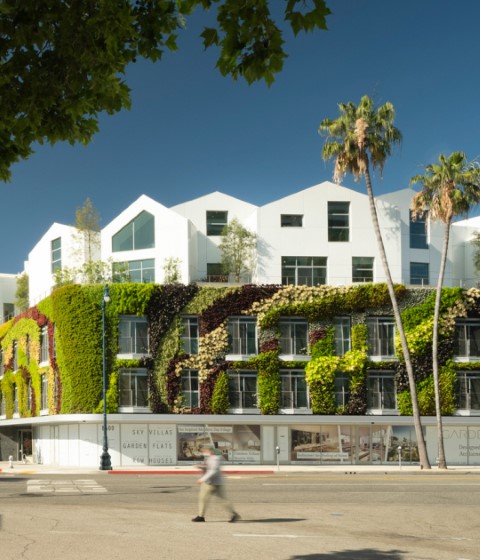The vegetation in the facade also improves the climatic conditions of the building and its energy efficiency. Stabilizing the temperatures and blurring the direct solar entrance towards the interior.

Villa M by Triptyque Architecture, Philippe Starck. Photograph by Michael Denancé.

Villa M by Triptyque Architecture, Philippe Starck. Photograph by Michael Denancé.
Project description by Triptyque Architecture, Philippe Starck
Designed by french-Brazilian Triptyque Architecture, with architectural design and art direction of the spaces signed by Philippe Starck, Villa M aims to create a new pact between cities, nature, and health.
A naturalistic manifest: this is the definition of Villa M, a mixed-use complex located in Boulevard Pasteur, in the Parisian borough of Montparnasse.
“We designed Villa M as a naturalist architectural manifesto: that is, a building of a new era, where man is no longer opposed to nature and the living."
Olivier Raffaëlli and Guillaume Sibaud, Triptyque Architecture, Architects and designers of Villa M.
"Villa M is a bubbling, honest, and warm place, where life is good and beautiful, and where it is good to live and eat well. Throughout the restaurant and the bar, fertile surprises, hidden places, and mental games arouse curiosity and guide the gaze of visitors, reminding them that intelligence is one of the most beautiful symptoms of humanity."
Philippe Starck, Architectural Design and Art director of the spaces of Villa M.
The program, imagined by Thierry Lorente and Amanda Lehmann of Groupe Pasteur Mutualité, is a mixed-use building including a Hotel by Paris Society, a coworking, and a dynamic healthcare-focused centre.
"We could not conceive a building dedicated to health and mutualism without including a notion of hospitality, welcome, hotel business. Mutualism implies sharing."
Thierry Lorente, Villa M Concept Creator and CEO of Group Pasteur Mutualité.
"We are guided by the well-being of caregivers, to best serve these professionals who follow a vocation from the start, but who experience difficulties and suffering."
Amanda Lehmann, Villa M Concept Creator and Joint General Director of Group Pasteur Mutualité.
Its architecture stands out with its living building, whose geometry is formed by metallic structure beams, conceived to house medicinal herbal plants, fruit trees, and medium to large-sized perennial species.
Designed as an exoskeleton, the building has a minimalist, light look, composed of prefabricated pieces as in a building game.


















































